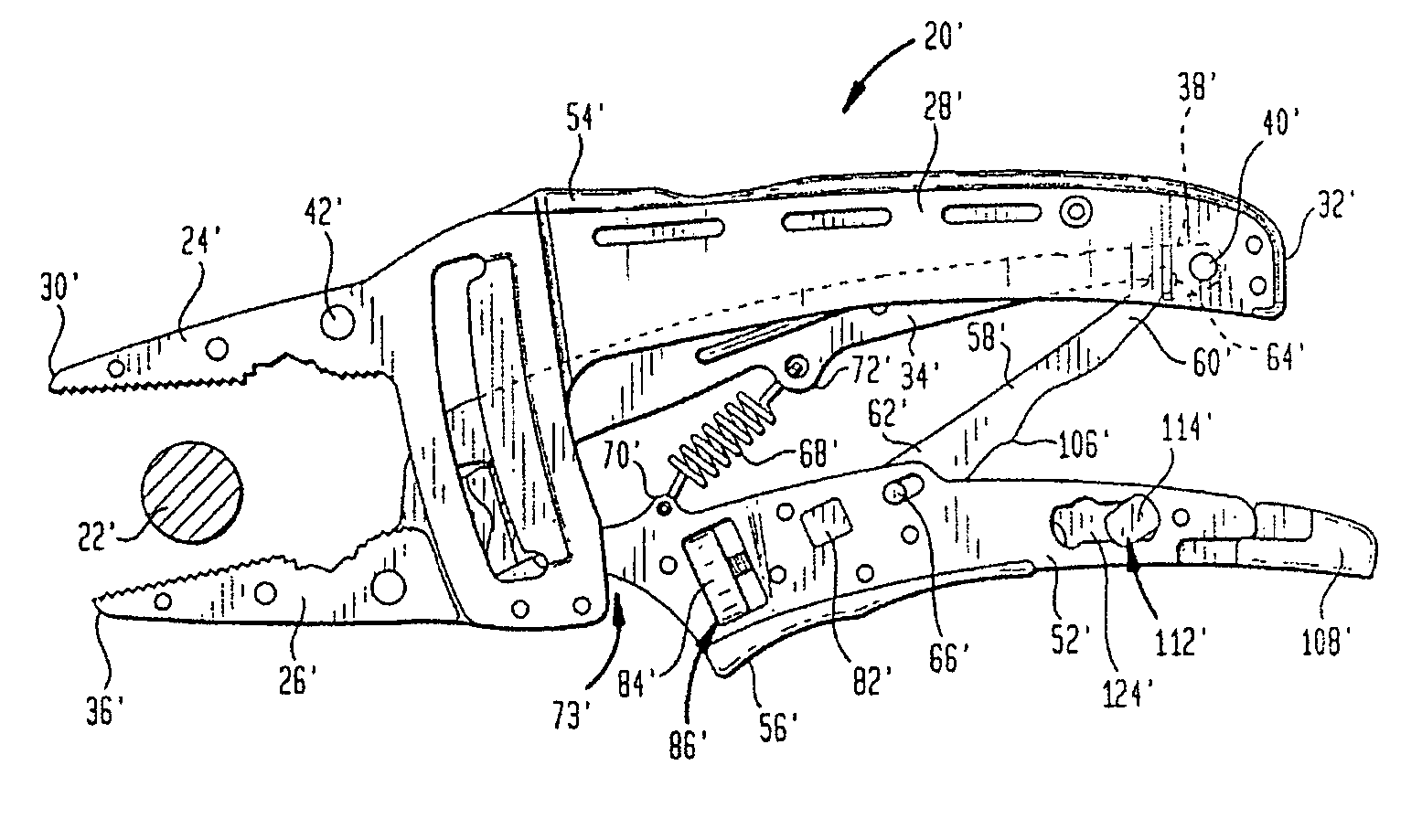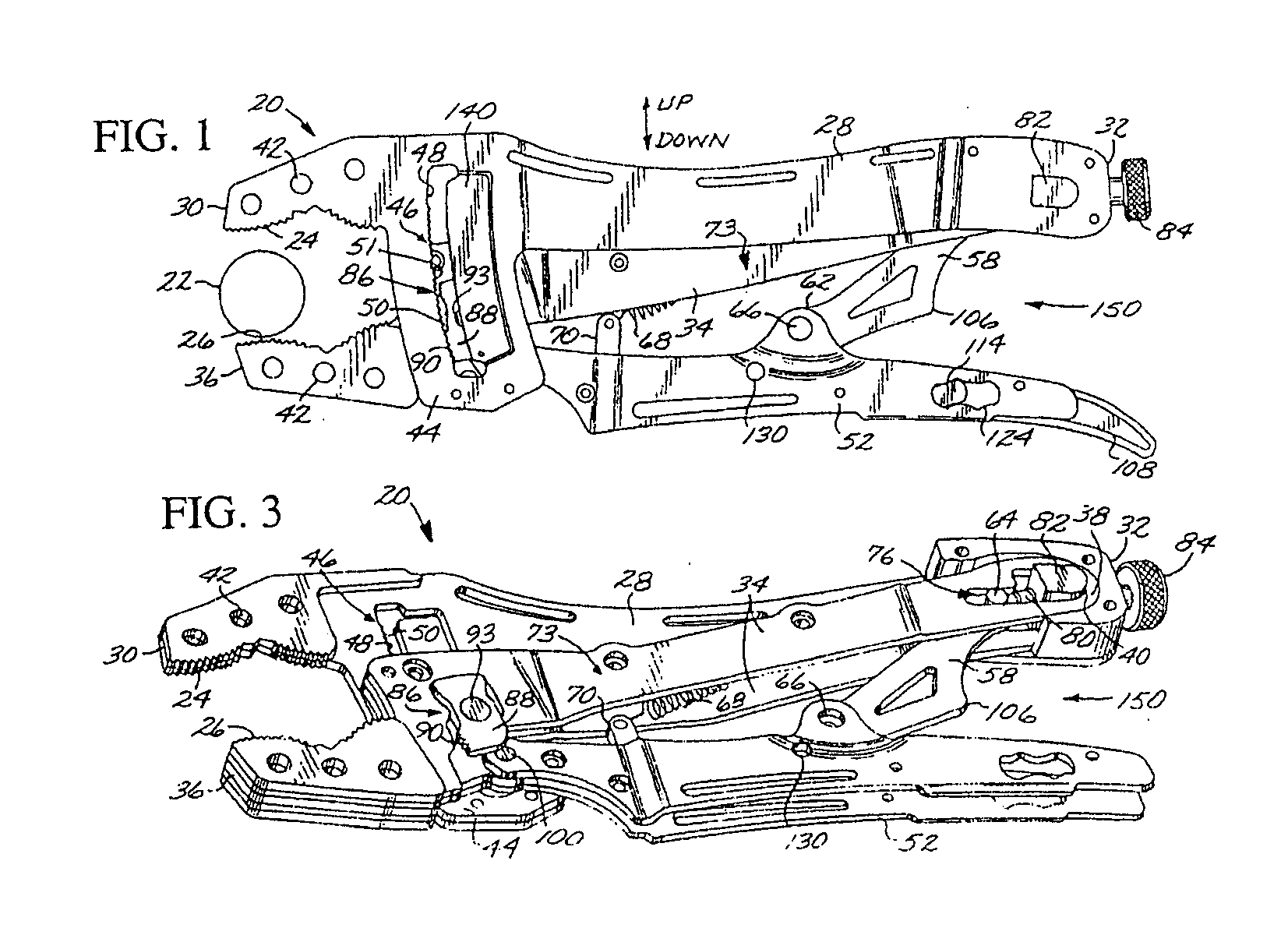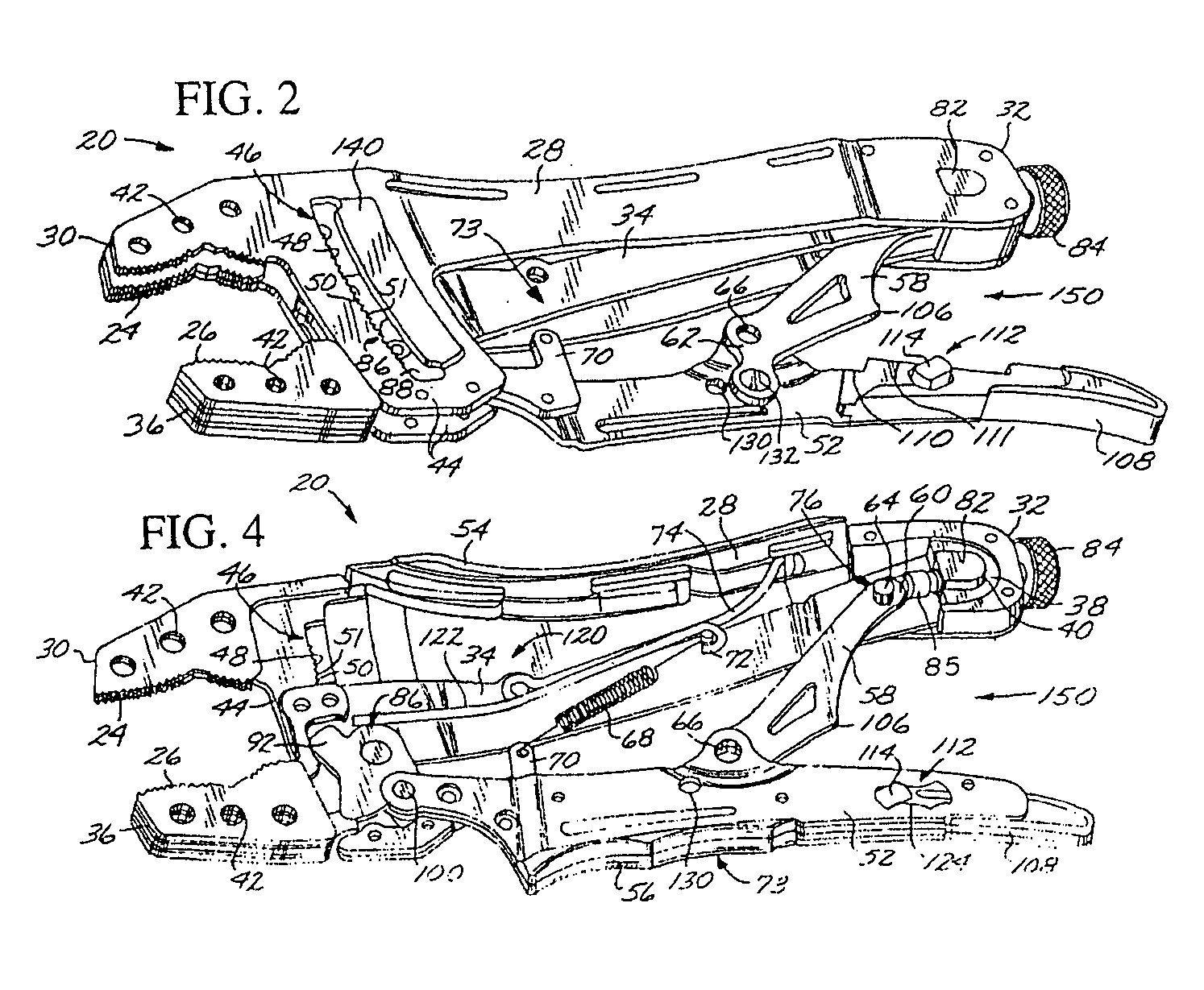Self-adjusting pliers
- Summary
- Abstract
- Description
- Claims
- Application Information
AI Technical Summary
Benefits of technology
Problems solved by technology
Method used
Image
Examples
Embodiment Construction
[0040]FIGS. 1-6 illustrate a self-adjusting pliers 20 according to certain embodiments of the present invention. FIG. 1 is an elevational view, and FIGS. 2-4 show the same pliers 20 with portions of the structure progressively removed to illustrate the internal structure and mechanics. FIGS. 5-6 are details. FIGS. 7 and 8, which relate to further embodiments of the present invention, will be discussed in detail following the discussion of the embodiments of FIGS. 1-6.
[0041]“Up” and “down” reference directions are indicated on several of the figures and apply to all of the embodiments. In the figures, rivets that are present to hold the structure together are not shown because their heads tend to obscure the views of the relevant structure. The appropriate rivet holes are visible.
[0042] As illustrated in FIG. 1, the self-adjusting pliers 20 is a hand tool that is operable to grasp a workpiece 22 between an upper jaw 24 and a lower jaw 26. An upper arm 28 has a first end 30 and a se...
PUM
 Login to View More
Login to View More Abstract
Description
Claims
Application Information
 Login to View More
Login to View More - R&D
- Intellectual Property
- Life Sciences
- Materials
- Tech Scout
- Unparalleled Data Quality
- Higher Quality Content
- 60% Fewer Hallucinations
Browse by: Latest US Patents, China's latest patents, Technical Efficacy Thesaurus, Application Domain, Technology Topic, Popular Technical Reports.
© 2025 PatSnap. All rights reserved.Legal|Privacy policy|Modern Slavery Act Transparency Statement|Sitemap|About US| Contact US: help@patsnap.com



